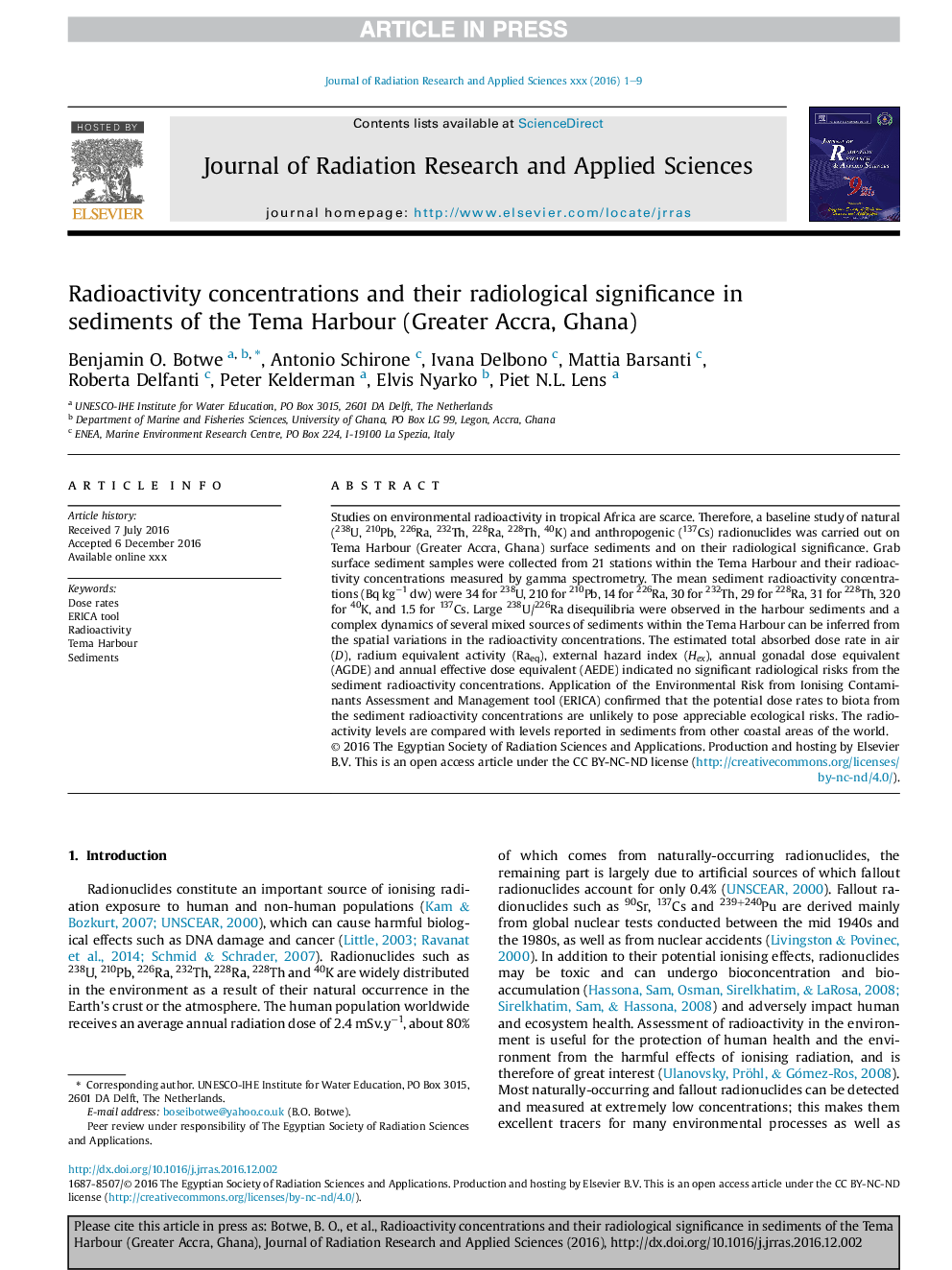| Article ID | Journal | Published Year | Pages | File Type |
|---|---|---|---|---|
| 5454513 | Journal of Radiation Research and Applied Sciences | 2017 | 9 Pages |
Abstract
Studies on environmental radioactivity in tropical Africa are scarce. Therefore, a baseline study of natural (238U, 210Pb, 226Ra, 232Th, 228Ra, 228Th, 40K) and anthropogenic (137Cs) radionuclides was carried out on Tema Harbour (Greater Accra, Ghana) surface sediments and on their radiological significance. Grab surface sediment samples were collected from 21 stations within the Tema Harbour and their radioactivity concentrations measured by gamma spectrometry. The mean sediment radioactivity concentrations (Bq kgâ1 dw) were 34 for 238U, 210 for 210Pb, 14 for 226Ra, 30 for 232Th, 29 for 228Ra, 31 for 228Th, 320 for 40K, and 1.5 for 137Cs. Large 238U/226Ra disequilibria were observed in the harbour sediments and a complex dynamics of several mixed sources of sediments within the Tema Harbour can be inferred from the spatial variations in the radioactivity concentrations. The estimated total absorbed dose rate in air (D), radium equivalent activity (Raeq), external hazard index (Hex), annual gonadal dose equivalent (AGDE) and annual effective dose equivalent (AEDE) indicated no significant radiological risks from the sediment radioactivity concentrations. Application of the Environmental Risk from Ionising Contaminants Assessment and Management tool (ERICA) confirmed that the potential dose rates to biota from the sediment radioactivity concentrations are unlikely to pose appreciable ecological risks. The radioactivity levels are compared with levels reported in sediments from other coastal areas of the world.
Related Topics
Physical Sciences and Engineering
Materials Science
Materials Science (General)
Authors
Benjamin O. Botwe, Antonio Schirone, Ivana Delbono, Mattia Barsanti, Roberta Delfanti, Peter Kelderman, Elvis Nyarko, Piet N.L. Lens,
